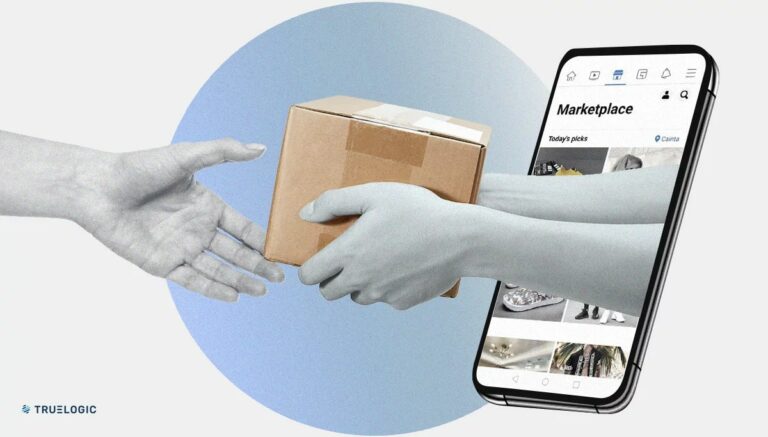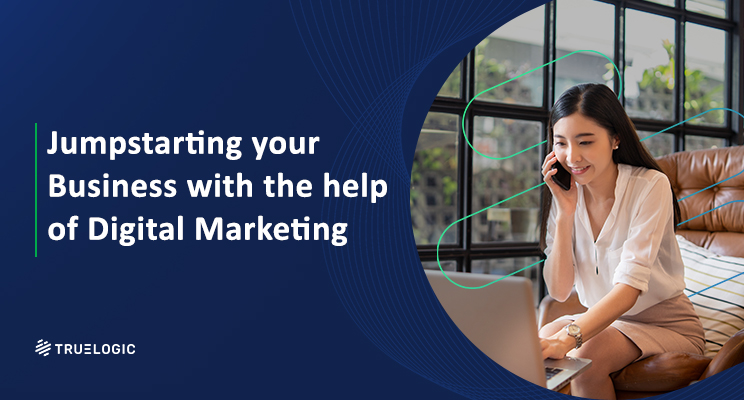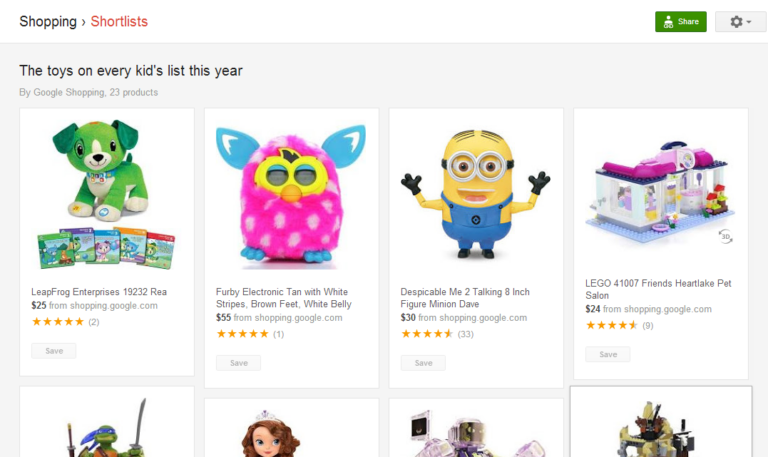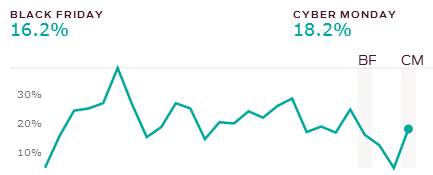E-commerce and its Evolution

Ecommerce refers to the buying and selling of goods or services online, including data entry and mode of payment to complete the whole purchase process. It is often referred to as the sale of physical products online, but it can also describe any kind of commercial transaction that is facilitated through the internet.
Where e-business refers to all aspects of operating an online business, e-commerce refers specifically to the transaction of goods and services.
In the past, e-commerce was mainly driven by the business-to-consumer business model, with retail as one of the early adopters. Convenience played a major role in driving demand and multiple players entered the field, making the competition intense.
After retail, the service sector was the next motivator to e-commerce growth. There’s a wide range of services currently offered through the internet, including banking, insurance, travel and hospitality, education, media and entertainment, jobs and career sites, and ride-sharing to name a few.
How B2C led the way
B2C e-commerce will continue to skyrocket where it is globally valued at USD 3.67 trillion in 2020. With growing digital dependency, the convenience of online shopping and a fast-growing digital population is constantly expected to drive growth.
B2B Evolved as well
The pandemic forced B2B companies, to look for more digital options. This gave a further boost for B2B e-commerce solutions, which redefine buyer-seller interactions. B2B e-commerce is now much more transparent, efficient, and swift.
The other major factor in B2B e-commerce growth is that 44% of millennials make buying decisions, while 33% make recommendations or otherwise influence the purchase process. The technologically adept millennial B2B buyer is influencing the behavior.
The market potential of B2B e-commerce is huge. According to Statista, it predicts B2B sales will reach $1.2 trillion by 2021. Globally, the B2B e-commerce market was worth $12.2 trillion in 2019, having grown from $5.8 trillion in 2013. Double-digit growth is predicted for B2B e-commerce sales through 2024. For this segment to fulfill its potential, companies need an e-commerce platform with these capabilities:
Robust and flexible: Many companies operate in multiple business models, from B2C to B2B to B2B2C and various combinations. The solution should address all such scenarios in a single platform, providing flexibility to opt for staffless commerce and traditional e-commerce and the ability to scale up without having to upgrade.
Integration: Easy, seamless, and real-time integration with existing cloud and on-prem, legacy applications.
Omnichannel personalization: An omnichannel platform with cloud-native architecture to provide personalization through context-driven services to help define customer segments based on intuitive conditions.
The Main Models of E-commerce & D2C
B2C (Business-to-Consumer): When a business sells a good or service to an individual consumer (e.g. You buy personal items directly from an online retailer).
B2B (Business-to-Business): When a business sells a good or service to another business (e.g. businesses providing business solutions to partners)
C2C (Consumer-to-Consumer): When a consumer sells a good or service to another consumer (e.g. second hand or marketplace)
C2B (Consumer-to-Business): When a consumer sells their own products or services to a business or organization (e.g. influencer-driven).
D2C (Direct to Consumer): Newest model of E-Commerce: Direct to consumer (D2C or DTC) has seen a massive surge since the advent of the pandemic, as brands who didn’t embrace D2C e-commerce were caught scrambling to adapt.
From CPG to wholesale to automotive and more, every industry is now paying attention, hoping to better engage customers and deliver what they want.
Direct to consumer e-commerce is the newest model of e-commerce which means that a brand is selling directly to their end customer without going through a retailer, distributor, or wholesaler. Subscriptions are a popular D2C item, and social selling via platforms like Instagram, Pinterest, Facebook, and recently, Tiktok, is a popular platform for direct-to-consumer sales.
E-commerce market overview
In 2019, the number of Internet users worldwide stood at 4.13 billion, which means that more than half of the global population is connected to the web. This isn’t just changing consumer behavior; it’s shaping the world economy at large.
B2C businesses today need an e-commerce solution with AI capabilities, which allow them to launch online stores in a flash. Plug-and-play with minimum coding and low maintenance are key requirements, along with a progressive web store optimized for mobile, tablet, and desktop, which enables companies to create their own intuitive mobile apps in one click.
COVID sends e-commerce into full speed
The early days of the global pandemic caused massive disruption in global supply chains, putting e-commerce to the test. With steep demand for essential goods such as groceries and personal care, online retailers answered the call.
By May of 2020, e-commerce transactions reached $82.5 billion — a 77% increase from 2019. Under normal circumstances, it would have taken four to six years to reach that number. As we continue to fight the pandemic, supply of essential goods is the least of the concerns for most of us, largely thanks to e-commerce.
Over the last two decades, there has been a shift towards online shopping. COVID-19 has made online shopping the new norm. The long-term impacts of this will be impossible to judge. Regardless of the effect, most people agree that the sector will continue to grow throughout this decade.
E-commerce emerging trends
Personalization: Delivering in the moment and understanding preferences will be key to growth
Service: Customer service must be part of modern e-commerce platforms
Search: SEO and search results are where the brand and product experience start
Omnichannel: Always-on, data-driven efforts will boost engagement, sales, and loyalty across all sectors and industries
Purpose: Sustainability, equality, environmental, and political stances are all now part of what makes a brand appealing – or not
CX: The entire customer experience must be seamless, from search to handing off between screens, to customer service
Payment and delivery options: Click and collect, curbside pickup, simple payment will become the norm, not the exception in the future
Creative wins: To gain attention online, your marketing and messaging must stand out from the crowd
Social commerce: By 2027, it’s projected that social commerce will drive $604 billion in sales
Full steam ahead with voice commerce, AR, and blockchain
As they say, what got you here won’t get you there. If we look at the big picture, e-commerce is still fairly new, yet the future holds endless opportunities. Success will depend on how we’re able to meet ever-changing buyer preferences.
This is only possible through continuous innovation. Some of the trends which will drive these innovations in the future include:
Voice search & zero UI: With more and more households adopting voice assistants, voice commerce is on the horizon. This has created a new gateway to consumers and offers the opportunity to establish and integrate a company into the consumer’s everyday life. Contact-less designs will become a preferred channel.
Augmented and virtual reality: For e-commerce to fully replace brick-and-mortar buying, the whole shopping experience needs to be more intuitive, friendly, and satisfying. This is where immersive technologies like augmented reality and virtual reality (AR/VR) will help.
Blockchain: Blockchain technology offers a range of capabilities that provide a lot of transparency in the financial and logistical aspects of business, but also allows consumers to have more control over their transactions. That helps build trust between the buyer and seller, which is essential for e-commerce success over the long run.
Benefits of E-commerce
Convenience: Online commerce makes purchases simpler, faster, and less time-consuming, allowing for 24-hour sales, quick delivery, and easy returns.
Personalization and customer experience: E-commerce marketplaces can create rich user profiles that allow them to personalize the products offered and make suggestions for other products that they might find interesting. This improves the customer experience by making shoppers feel understood on a personal level, increasing the odds of brand loyalty.
Global marketplace: Customers from around the world can easily shop e-commerce sites – companies are no longer restricted by geography or physical barriers.
Minimized expenses: Since brick and mortar is no longer required, digital sellers can launch online stores with minimal startup and operating costs.
Successful e-commerce sites
Alibaba: Launching in 1999, The Chinese company Alibaba is by far the world’s most successful e-commerce company and retailer, hosting the largest B2B (Alibaba.com), C2C (Taobao.com), and B2C (Tmall) marketplaces across the globe. Their online profits have surpassed all US retailers – including Walmart and Amazon
Amazon: Amazon is the largest e-commerce retailer in the United States, and has changed the face of retail so much that a burning question for most retailers is how to beat Amazon.
eBay: One of the first e-commerce sites, eBay still dominates the digital market space, allowing for businesses and individuals to sell their products online.
Lazada: Lazada Group is an international e-commerce company founded by Maximilian Bittner, Mads Faurholt, Stefan Bruun, and Raphael Strauch with the backing of Rocket Internet in 2012, and owned by Alibaba Group.
With around 300 SKUs, Lazada provides a vast variety of products to its customers covering all the categories like Beauty products, Groceries, Homecare, Mommy and me, etc. Focusing on LazMall, it currently houses 32,000 brands and retail partners which include big brands like Nike, Coach, Starbucks, L’Oreal, Shiseido, and more.
Having this one place where you know you could get authentic products even from high-end brands helped gain consumers’ trust and boosted their confidence to make big-ticket purchases online, establishing some form of trust in the Filipino market. Also, Lazada sees sustained sales growth through double-digit orders:
- Lazada Philippines ‘sales and orders increased 2.5 times at present compared to pre-pandemic levels.
- In terms of sellers, the number grew more than three times, with over 120,000 active sellers on the platform at present.
Shopee: Shopee first started as primarily a consumer-to-consumer (C2C) marketplace but has since moved into both a C2C and business-to-consumer (B2C) hybrid model. Shopee partners with over 70 courier service providers across its markets to provide logistical support for its users.
In the Philippines, Shopee now has more than 6 million downloads, and over 3 million active listings by over 200,000 sellers. The contributing factor to Shopee’s growth in the country is the “mobile-first” approach, attracting online consumers who are going straight from offline shopping to mobile shopping.
In addition to that, the success of two major mega-sale campaigns that benefited both buyers and sellers significantly namely the Shopee 9.9 Mobile Shopping Day that saw a 3.5 times increase in orders and a 5 times increase in visits across the region. It was also cited by the iPrice study as one of Shopee’s “all-time high” in 2017. The other mega-sale event is the 11.11 Shopee Super Christmas Sale, recording 2.5 million orders across the region within 24 hours, surpassing last year’s performance by 4.5 times
Other contributing factors include the continued success of Shopee University, a series of in-depth tutorial modules crafted by Shopee to aid local entrepreneurs and businesses in setting up their online businesses
Common Ecommerce Mistakes
People are spoiled for the choice of where to spend their money, and if retailers make it too complicated or frustrating to use their shop, customers simply go elsewhere. If they make a purchase, they’re unlikely to return if it was an unpleasant experience. Maybe they’ll even leave a poor review, persuading other potential customers to avoid your e-commerce store.
All of which highlights the importance of reducing friction in the shopping experience, from compelling product images to intuitive website design.
We’ve categorized the following 18 e-commerce mistakes into four sections:
- Not Understanding Your Product or Audience.
- Improper Tech Stack.
- Issues with the product pages.
- Failure to provide a great user experience.
Ecommerce Mistake #1: Not Understanding Your Product or Audience
If you don’t understand your product or audience, you’re guessing that they want your product. If they don’t, they won’t buy it. And if they won’t buy it, you’ve lost time and money by creating an online store.
By learning what your audience wants and the frustrations they have with the existing options, you can offer things they truly want. Then, you’ll have lots of potential customers rushing to your shopping cart.
Not doing market research.
In a market research sense, these fishing holes are all around us: Google searches, Facebook groups, YouTube videos (and comments), reviews for your competitors, forums—the list is endless. Each of these fishing holes gives you a treasure trove of information, from product information to customer service expectations, and these holes are excellent places for you to test the waters of your e-commerce business.
Regularly spend some time listening to this feedback, and use it to target customers. Your conversion rates may never look the same again.
Failing to define your target audience.
As a starting point, think about what problems you solve for your target customers. As you gather more information, you can create full buyer personas, which can even be used to reach more people who are likely to buy from you. That information would include:
- Demographic information (age, gender, marital status, income, etc.).
- How they make purchasing decisions.
- Interests and hobbies.
- Preferred platforms.
Pricing products with no research.
When you’ve collected research on who your target audience is, what they want, and how much of a problem you’re solving for them, you’ll also have an idea of how much your product is worth to them.
Many business owners will set their pricing based on how much competitors charge. There’s logic to this, but if your research shows people are unsatisfied with the available options, and you’re selling a needed solution, they may pay a premium. You can target customers who are willing to pay the extra for convenience, ethical or healthier ingredients, or an additional value of your products.
Ecommerce Mistake #2: Improper Tech Stack
The low barrier to entry for starting an e-commerce store is a double-edged sword. On one side, you can start today with incredibly low costs — great! On the other, not all tech is equal. From user experience to security to customer retention, choosing the right platforms (or “tech stack”) for your online business is crucial.
And by choosing wisely from the start, you can save significant time and frustration later when other business owners have to migrate to different platforms.
Choosing the wrong e-commerce platform
There are significant differences between e-commerce platforms. Some offer only the most basic features and do not always with an option to upgrade.
Others may seem appealing at first but then surprise you with hidden costs, making it more expensive than choosing a platform with an upfront fee. Basic e-commerce platforms are less likely to have native customization options, either being reliant on third-party solutions or not having access to such features at all.
The right e-commerce platform will grow with your business, with features you’ll need as you scale or expand. For example, you may focus on B2C today but work with a digital marketing agency for B2B in a few years.
If you’re just starting out, spend some time researching the best e-commerce platform first. Talk to other store owners, browse online communities for feedback, and then make a decision. If you’ve already opened an online store, and it’s not on a platform you can stay with as your business grows, you’ll need to consider migrating to a more appropriate one.
Not investing in security
While every new business owner needs to watch their outgoings, especially early on, security should be seen as an investment rather than a cost. Fraudsters have an endless amount of ways to attack, including financial fraud, phishing scams, and infected links.
It’s a matter of “when, not if” your online store gets targeted in some form, and not having the right security in place can be devastating.
There are a number of ways to boost the security of your e-commerce site. At a minimum, you should have SSL certificates to protect payments, antivirus software to keep payment information safe and switch to HTTPS to protect your users and their data.
Creating your own e-commerce CMS
Creating your own content management system (CMS) to your own requirements can seem appealing. In reality, you’re opening yourself up to eternal frustrations and problems, including:
- Difficulty in creating it.
- Lack of support or integration with other software.
- You may underestimate the number of features you need.
- Security becomes a lot harder.
- You’ll need to provide training.
If you want to build your own CMS for your e-commerce platform, our advice is simple: don’t! If you already have, your next step will depend on how it’s working out for you and what the future looks like. If it’s causing issues with no end in sight, you may want to cut your losses and move to an existing CMS.
Ecommerce Mistake #3: Issues with Product Pages
Product pages are perhaps the most important aspect of your site. If the product page lacks information or fails to show the item in a clear, compelling way, your potential customers are far less likely to buy it. Here are four mistakes to avoid to ensure your pages are working their hardest for you.
Not using social proof
Social proof tells potential customers that buyers like your products and they’re worth purchasing. In fact, 76% of consumers admit they’re less likely to purchase from a retailer that doesn’t have reviews.
To collect more customer reviews, make it easy for your buyers. You can send an email in your automated sequence asking for a review, include a note with the item itself, or even send people to a thank-you page that asks for a review once they’ve completed the checkout process.
Product photos that don’t showcase the product
Your photos are an opportunity to make your products seem desirable, even irresistible. The best item can be made to look unappealing with the wrong photography while professional imagery can make your products really shine.
Non-descriptive product descriptions
Product images can’t do all the work; they need to be paired with compelling, persuasive descriptions. What is so good about this product? How is it different from similar items from competitors? Why should someone buy it?
Poor use of media, videos and imagery
Your e-commerce website’s primary goal is to encourage potential customers to buy. This requires giving enough information to make the items appealing, without being overwhelming.
A common mistake is to throw everything and the kitchen sink on the site or product pages. A mix of media, including imagery and videos, can be very persuasive. But overdoing it can push people away.
If the site takes too long to load, is slow to navigate, or the visitor feels confused and overwhelmed, your site is working against you.
Every decision you make when building your e-commerce site should be focused on providing the best user experience.
Failing to Provide a Great User Experience
User experience is everything. Your website design impacts conversion rates as well as your search engine ranking, so it’s important that you get it right. Here, we’ll explore some of the most common mistakes online stores make, and how to make sure you avoid them.
There are no categories
Your potential customers need to be able to find the products they want. Categories tell your visitors where to go. They can also encourage visitors to look at items they weren’t already looking for, helping to increase your sales and revenue. If they have to search or scroll through unrelated items, they’ll bounce from your site.
Providing little service info or business contact information
Buying decisions are influenced by more than just the product. Consumers also want to know about shipping rates, how long delivery takes, what the return options are, and how to get in touch with questions or concerns. Not having these details causes friction for the potential customer.
Poor navigation
As we’ve explained when talking about design and categories, good navigation is crucial. Your site has great products, contact information, details on shipping, and returns — but can visitors find them?
No guest checkout
How many times have you added items to a cart, then abandoned them because you had to make an account? If the answer is more than “zero” you already know why not having a guest checkout option in your checkout process is a mistake.
There’s an obvious reason why e-commerce stores do this — making an account increases the amount of customer information collected and the number of email subscribers — giving the business owners an opportunity to email customers with future offers.
Content that is like your competitors
Here’s a simple fact: if you don’t give potential customers a reason to buy from you, they won’t. If you sound like your competitors, what would compel people to buy from you instead of them? It’s fine to gather inspiration from your competitors, but you also need to be able to differentiate and fill the gaps that your competition leaves in the market.
The good news is this is a really easy mistake to fix. With your market research in the fishing holes and a defined audience, you should have no problem creating content that’s fresh and unique to you — giving your target audience incentive to choose you over other e-commerce stores.
Not using analytics to improve marketing tactics
Effective marketing blends creativity and data. Your e-commerce store’s marketing strategy should be influenced by customer behavior.
Consider this: emails that are personalized and sent based on consumer behavior generate 29% of all email purchases and have conversion rates 359% higher than non-personalized email campaigns — all while accounting for less than 2% of total email sends.
Using analytics to improve your marketing tactics can give your online store a huge boost over competitors. It’s also quite easy to do because most platforms will provide you with clear data on traffic sources, cart abandons, popular products and on-site behavior.
Lack of payment options
Similar to the importance of a guest checkout option, a lack of payment options is an unnecessary barrier for your customers. We live in an era of instant actions, and anything that slows us down is an annoyance.
Not supporting the potential customer’s preferred payment option can drive them away — nobody is going to open a new account just to place an order with you.
Fortunately, this is an easy fix. If you’re using a commonplace CMS, the support for multiple payment options should already be included (and if you were still on the fence, add this to the list of reasons for not building your own CMS).
Lack of shipping options
Put yourself in the customer’s shoes for a second. What do they want? Three things:
- Their item(s)
- To pay a fair price
- Reliable and fast shipping
Free shipping is no longer considered a perk, with 79% of consumers putting it as a top factor. And with only 15% of consumers feeling that their shipping expectations are met, this is a big opportunity for your e-commerce store to win new fans.










